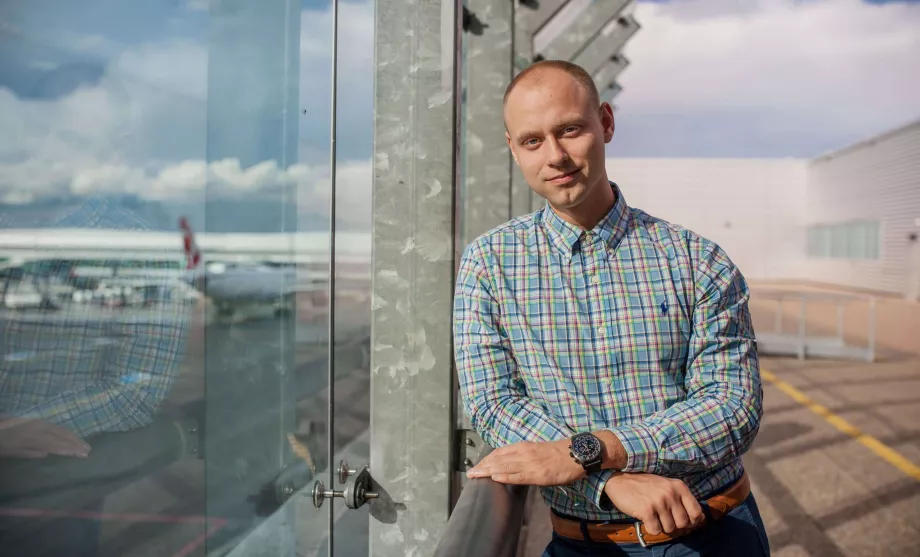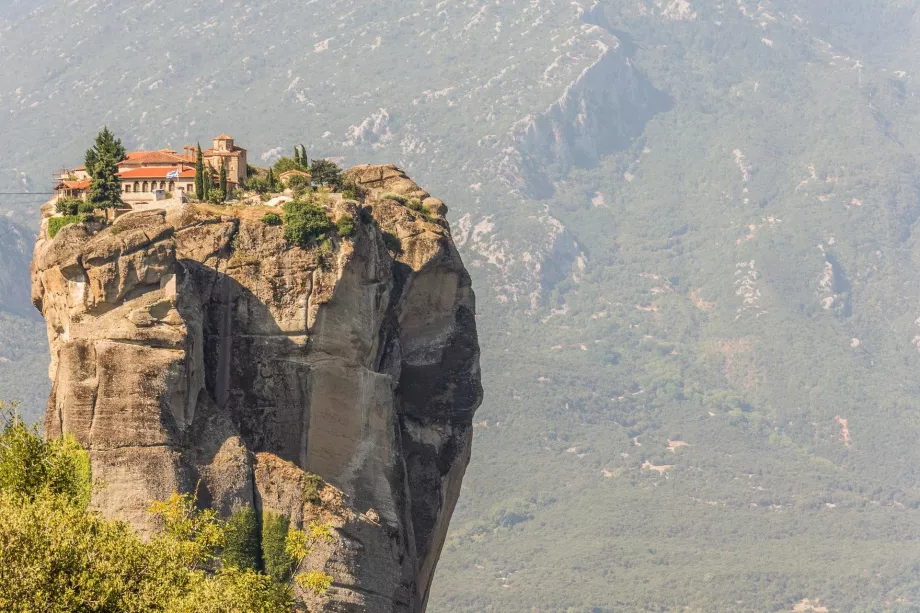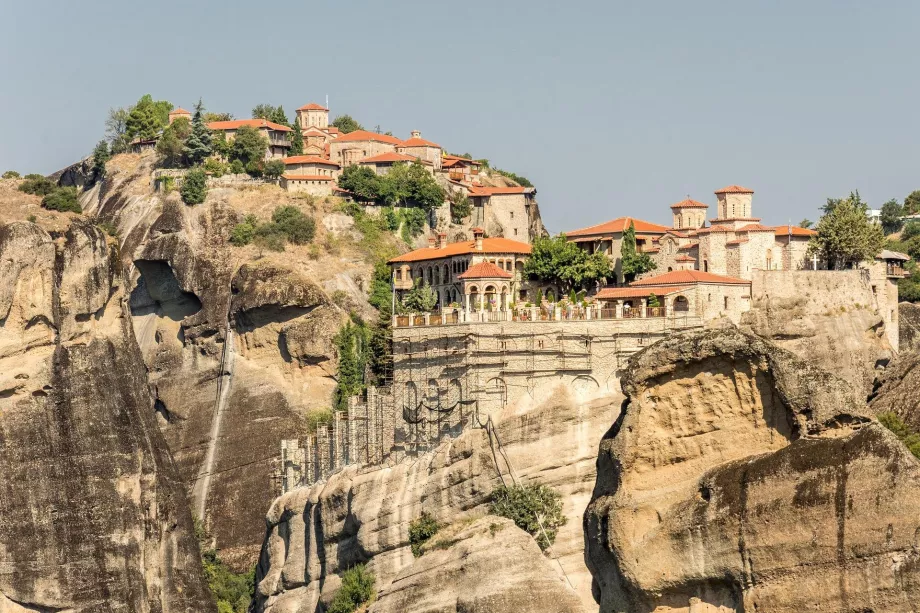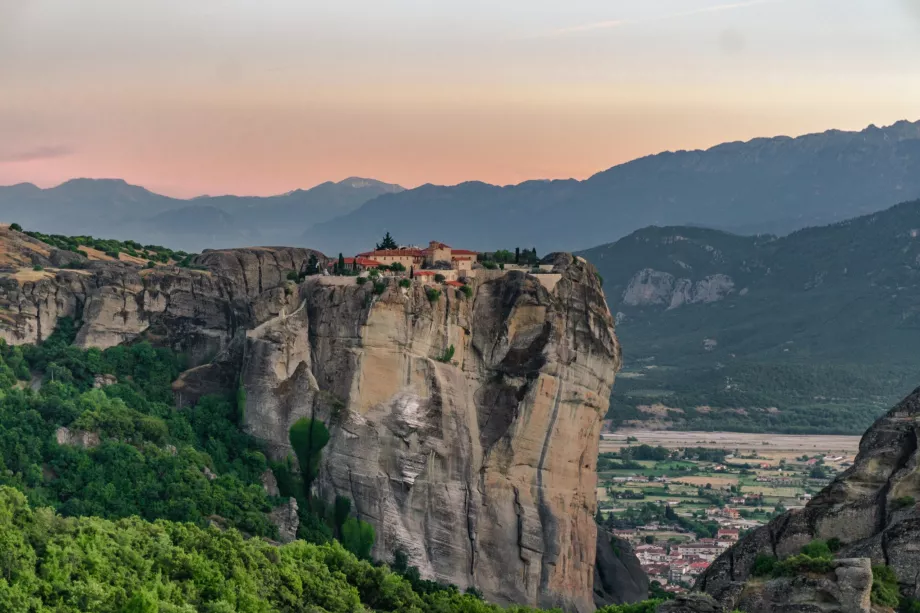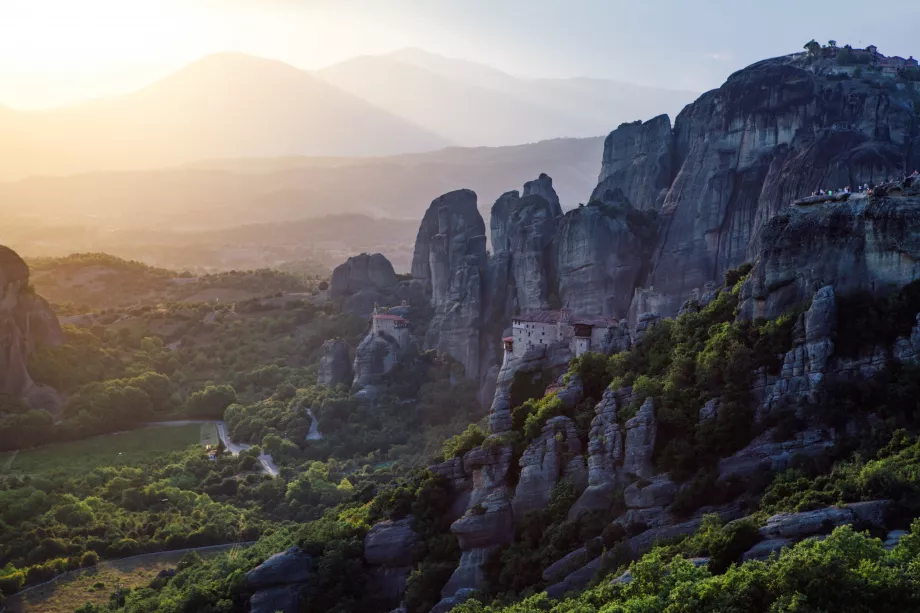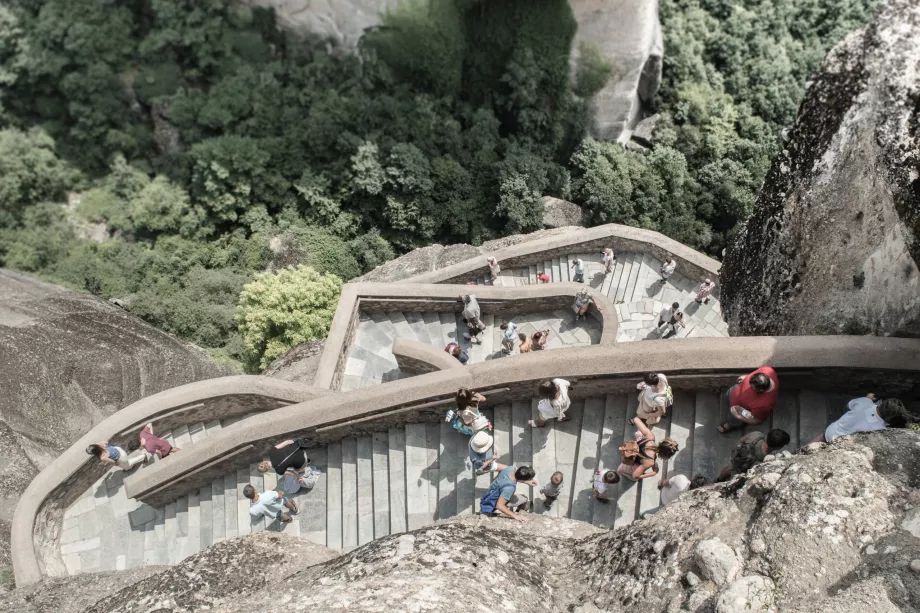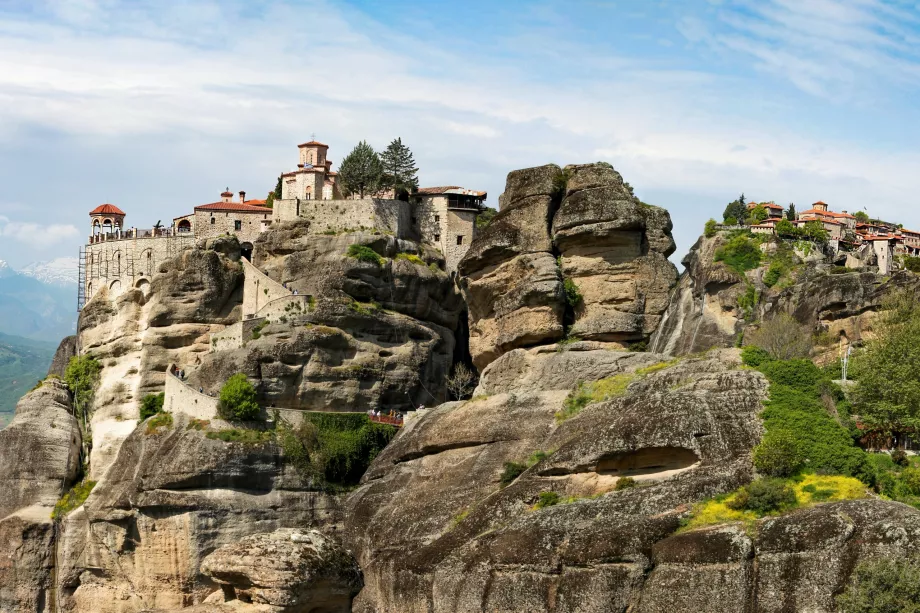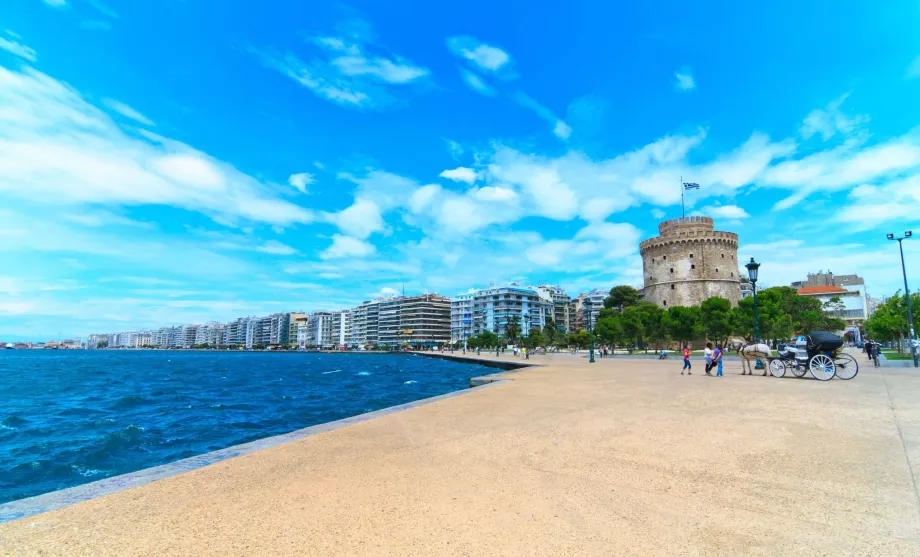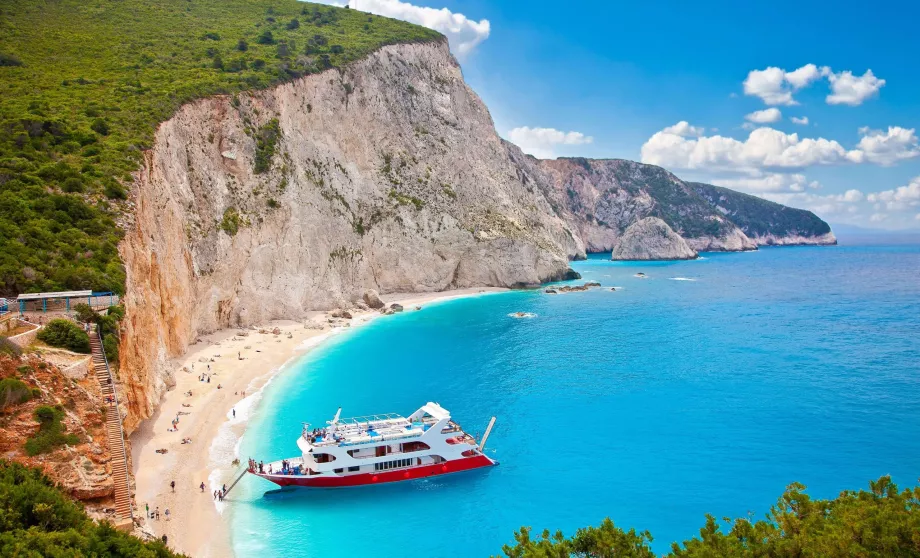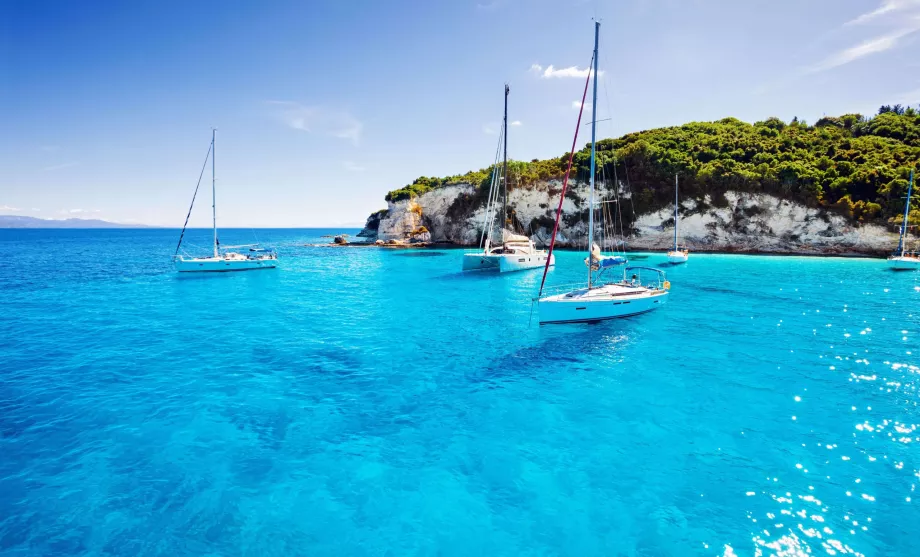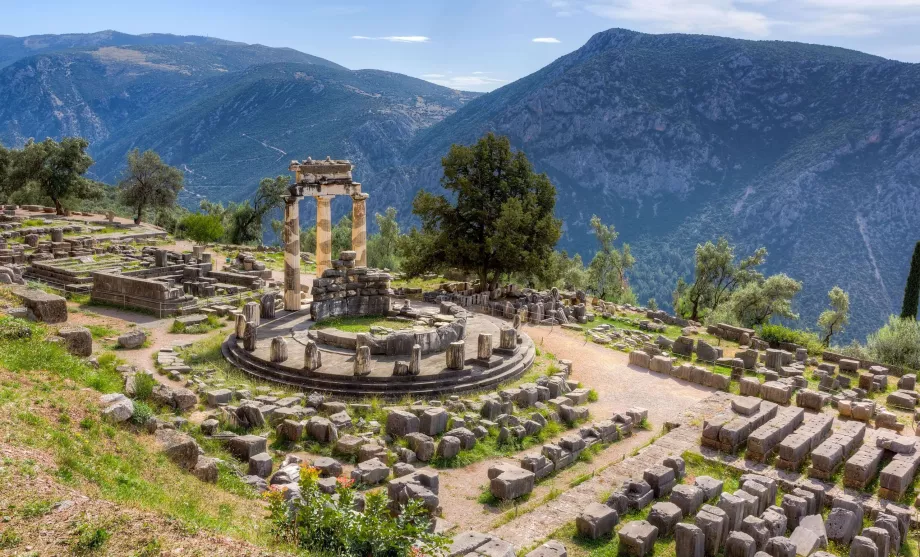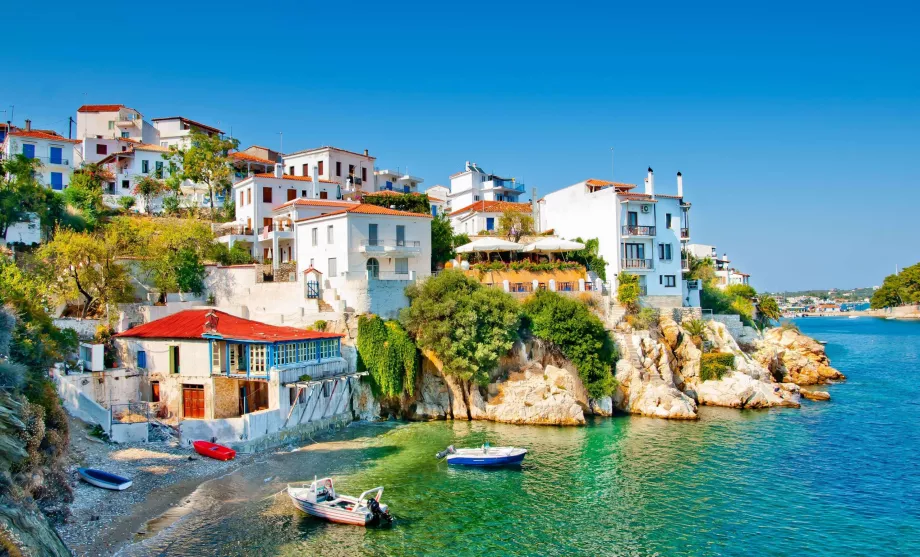Monasteries of Meteora
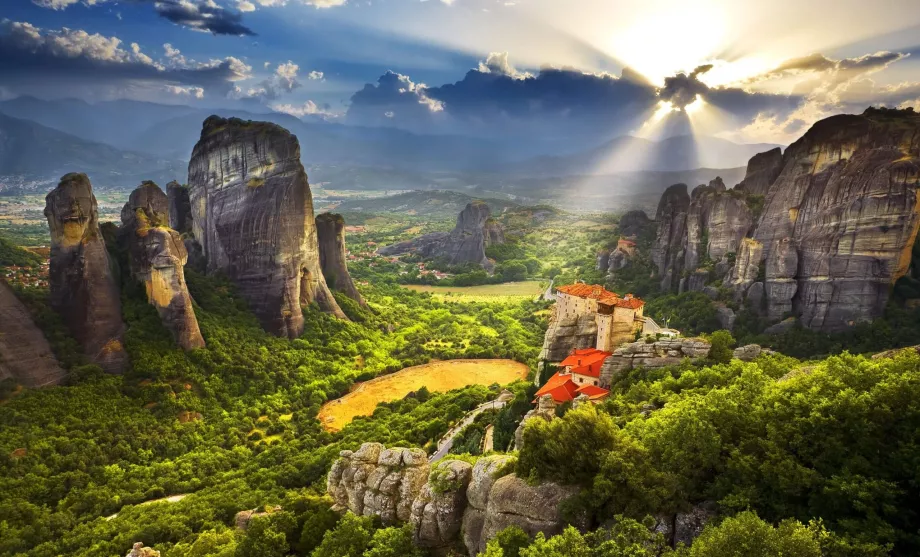
Meteora, or "hanging in the air", is a cluster of monasteries of the Orthodox Church built on the sandstone cliffs of central Greece.
This place is guaranteed to take your breath away and there is no harm in taking a longer 2-day trip from the sea.
Car rental in Greece - prices and availability
In total, you'll find 6 monasteries open to the public on the majestic often almost perpendicular cliffs.
Seen from a distance, the monasteries often look like strange eagle's nests in seemingly completely inaccessible terrain. The area of the Monasteries of Saint Meteora is a UNESCO World Heritage Site and the Greek government has even issued a separate law to protect the cultural heritage of this particular site.
The Eighth Wonder of the World Meteora
The area of the monasteries is often referred to as the eighth wonder of the world, and definitely rightly so. From the vast plains of the Thessaly region, the extraordinarily photogenic sandstone cliffs suddenly emerge, literally jutting out of the landscape to a height of hundreds of metres.
On their peaks, Orthodox monasteries are literally glued to the ground, and it is still not entirely clear how the monks built them in the past.
Exactly when the first monastery was built is not known, so Megalon Meteoro ("Great Floating in the Air" - hence the plural name "Meteora") is thought to be the oldest, with a surviving history and a clear date of foundation in 1356 by the monk Ahtanisus of the monastic state of Athos in Chalkidiki.
During the 14th to 16th centuries, a total of 24 monasteries were built here, only 6 have survived to the present day, the rest are visible ruins or only small parts of the buildings.
The construction of the monasteries was extremely difficult and the only tool the monks used to help themselves was the pulley. All materials were carried up ladders in poles. With the development of tourism during the 20th century, roads were built to the monasteries, winding through passes and mountains, and bridges or fenced paths lead from parking lots to some monasteries.
List of monasteries - entrance fees and opening hours
Which monasteries of Meteora can be visited? When are they open and how much do tickets cost?
We have compiled a short list of accessible monasteries in the area.
All monasteries have a separate entrance fee at the door (cannot be booked online) and is 3 eur (children under 12 are free).
Payment can only be made in cash.
In addition, entry to all monasteries is only allowed in decent clothing, i.e. always long trousers and draped shoulders.
- The Great Meteora (Megalo Meteoro) - the oldest monastery dating back to 1354 is also the largest. You will be particularly impressed by the rich frescoes in the central church and the small Meteora Museum with interesting artefacts. The monastery is 613 metres high and there are 115 steps leading up to it from the car park.
- Opening hours (1.4. - 31.10.): 9:30-15:00, closed Tuesdays
- Opening hours (winter): 9:30-14:00, Tuesday, Wednesday, Thursday closed
- Varlaam - the second oldest monastery is dedicated to all the saints and dates back to 1350 by Father Varlaam, but was completely rebuilt in 1518. Inside, the ornate paintings on the walls and ceiling in the Catholicon Chapel are among the most beautiful of all the monasteries. 195 steps lead up to the entrance from the car park.
- Opening hours (1.4. - 31.10.): 9:00-16:00, closed Fridays
- Opening hours (winter): 9:30-15:00, closed Tuesdays and Fridays
- Roussanou - the second smallest monastery was probably built towards the end of the 14th century, but the main church was not built by the monks until 1545. The interior is particularly striking for its beautiful monastery garden. Although Roussanou is the 2nd smallest and least interesting, it opens up one of the most beautiful views, with 3 monasteries visible in one single direction. There are no steps leading up to Roussanou, but only a steep cobbled path about 200 metres from the road.
- Opening hours (1.4. - 31.10.): 9:00-16:00, closed Wednesdays
- Opening hours (winter): 9:30-14:00, closed Wednesday
- St. Stephen's Monastery (Agios Stefanos) - the only women's monastery in Meteora probably dates back to the late 14th century and its main chapel is definitely worth a visit, boasting the most beautiful frescoes of any monastery. Agios Stefanos is the only monastery visible from Kalambaka, as it is the lowest and most easily accessible: it is only connected to the car park by a short bridge.
- Opening hours (1.4. - 31.10.): 9:00-13:30 and 15:30-17:30, closed Mondays
- Opening hours (winter): 9:30-13:00 and 15:00-17:00, closed Mondays
- Monastery of the Holy Trinity (Agia Triada) - built between 1438 and 1476, it is one of the least visited and least accessible. From the road, you'll first walk about 400 metres along a cobbled path and then climb 140 more irregular steps. The traditionally richly decorated main church will impress, but it is one of the smallest of all the monasteries.
- Opening hours (1.4. - 31.10.): 9:00-17:00, closed Thursdays
- Opening hours (winter): 10:00-15:00, closed Wednesday and Thursday
- Monastery of St. Nicholas (Agios Nikolaos Anapasfas) - the smallest monastery towers over the village of Kastraki while crouching under massive rock massifs. It is the extraordinary views of the surrounding countryside that attract most people here. The interiors are particularly striking with their murals, but because of their size you can walk through them in a few minutes. The monastery probably dates from the late 15th century, but it stands on the remains of 13th century churches. From the road you have to climb over 130 steps.
- Opening hours (1.4. - 31.10.): 9:00-17:00, open every day
- Opening hours (winter): 9:00-16:00, open every day
On foot to Ypapantis Monastery
Further north of the main Meteora area you will come across the now disused but still very well preserved small monastery of Ypapantis literally squeezed into the rock face.
Unlike the others, it is not located on top of the rock columns.
The Ypapantis Monastery can only be reached on foot along the marked path from the village of Kastraki (3.6 km one way - see route map) or from the parking lot of the Great Meteora Monastery (1.5 km one way - see route map).
Ypapantis is closed to the public, but the view from the hiking trail is beautiful.
Where to stay and for how long?
Set aside a full day to visit the Meteora area and if you are interested in the history in more detail or like to hike the mountain trails, feel free to stay 3 nights.
The main centre at Meteora is the town of Kalambaka (sometimes spelled Kalampaka or Kalabaka, then "Καλαμπάκα" in Greek), located about 1.5km to the south, or the closer but much smaller village of Kastraki.
In Kalambaka you will find absolutely complete facilities from dozens of tavernas, restaurants, souvenir shops, but you can also shop here for example in the usual Lidl supermarket.
In Kalambaka you will find over 200 accommodations ranging from private apartments and studios with prices from 55 eur for a fully equipped room to more luxurious hotels with prices between 80 eur and 130 eur per night for 2.
Of the cheaper apartments to 70 eur we would recommend the beautiful modern Toti Boutique Rooms.
From the classic hotels we would choose the clean modern Hotel Galaxy ** a few metres from the train station and also the centre of Kalambaka, Pyrgos Adrachti ***, one of the top rated hotels with good prices and a great location in Kastraki village near the start of the tourist route towards Meteora or Hotel Doupiani House *** with unbeatable views.
How to get to Kalambaka
The town lies in the Thessaly region of central Greece. The nearest airport is Thessaloniki Airport (258 km), but it is also easy to get here from Athens (355 km). It will always be easiest to travel by rental car, as this is the only way to stop at all the places with beautiful views, plus make any stop on the way from your resort or the airport to Meteora.
Thessaloniki - Kalambaka
Trains run 3 times a day with a change at Palaeofarsalos station. From here you will take a bus (included in the price of the train ticket) due to the long term reconstruction of the railway.
The total journey time varies depending on the time of the transfer, usually around 6 hours. A one-way ticket costs about 24 eur and can be bought online at the official Greek Railways website tickets.trainose.gr.
Buses run 4 times a day (only 3 times on Saturdays) and you have to change buses in Trikala.
Buses then run from Trikala to Kalambaka about once an hour, more often in summer. A one-way ticket from Thessaloniki to Kalampaka with a change in Trikala costs about 22,60 eur39 eurInformation and online purchase on the ktel-trikala.gr website.
Athens - Kalambaka
The most straightforward way is by train.
At present, you always have to change to an alternative bus service at Paleofarsalos station, which is included in the ticket price. The journey time is over 5 hours.
A one-way ticket costs 30,90 eur, a return ticket about 54 eur. The timetable and the possibility of buying tickets online, which we recommend especially in the summer season, can be found on the website tickets.trainose.gr.
Thebus from Athens can only be reached by changing buses in Trikala. For information and to buy online, visit ktel-trikala.gr. Buses run 5 times a day from Athens to Trikala and hourly from Trikala to Kalambaka. You can buy a ticket for the whole route, one-way at 29 eur, return at 49 eur. However, the journey will take considerably longer than by train - about 6 hours in total including transfers.
Olympic Riviera - Kalambaka
The nearest resorts to Meteora are in the Olympic Riviera. Many tour operators offer organised optional excursions, but you can also make the journey on your own by train.
This stops, for example, in Leptokarya or Platamonas and you can always change at Palaeofarsalos station. In total, the journey takes about 2.5 hours and return tickets cost about 28 eur.
How to get from Kalambaka to the monasteries?
All the monasteries are located at a distance of about 2 to 4 km from the centre of Kalambaka and you will have a big and steep climb to reach them all. There are several ways to get to the Meteora monasteries.
1. By bus - from the centre of Kalambaka through the village of Kastraki, a bus runs 3 times a day , stopping at all 6 monasteries open to the public in turn.
It usually leaves Kalmbaka at around 9:00, 12:30 and 14:30, and returns from Holy Trinity Monastery, where the terminus is, about an hour later. The timetable can be found on the ktel-trikala.gr website and the ticket costs 1,60 eur. The disadvantage is the impossibility to visit all the monasteries at once or only with great difficulty.
2. Tour with a local tour operator - the most convenient option. There are many travel agencies operating in the center of Kalambaka, there is no need to book anything in advance, just choose an agency on the spot and go on an approximately 5-hour tour by minibus, during which you will stop at all the monasteries. Prices range between 20 eur and 25 eur.
3. On foot - from Kalambaka there are marked footpaths leading to all the monasteries. Expect very steep elevation changes, but a popular combination is to take the bus up and then walk down. The most remote monastery, the Great Meteora, is 3.5 km from the centre of Kalambaka. See the tourist map of the area.
4. By taxi - of course you can also go by private taxi, of which there are plenty in Kalambaka. If you want to go around all the monasteries, expect a price around 35 eur.
What to see around
Discover all the places to see in Greece.
Any questions left?
If you have any questions or comments about the article...
